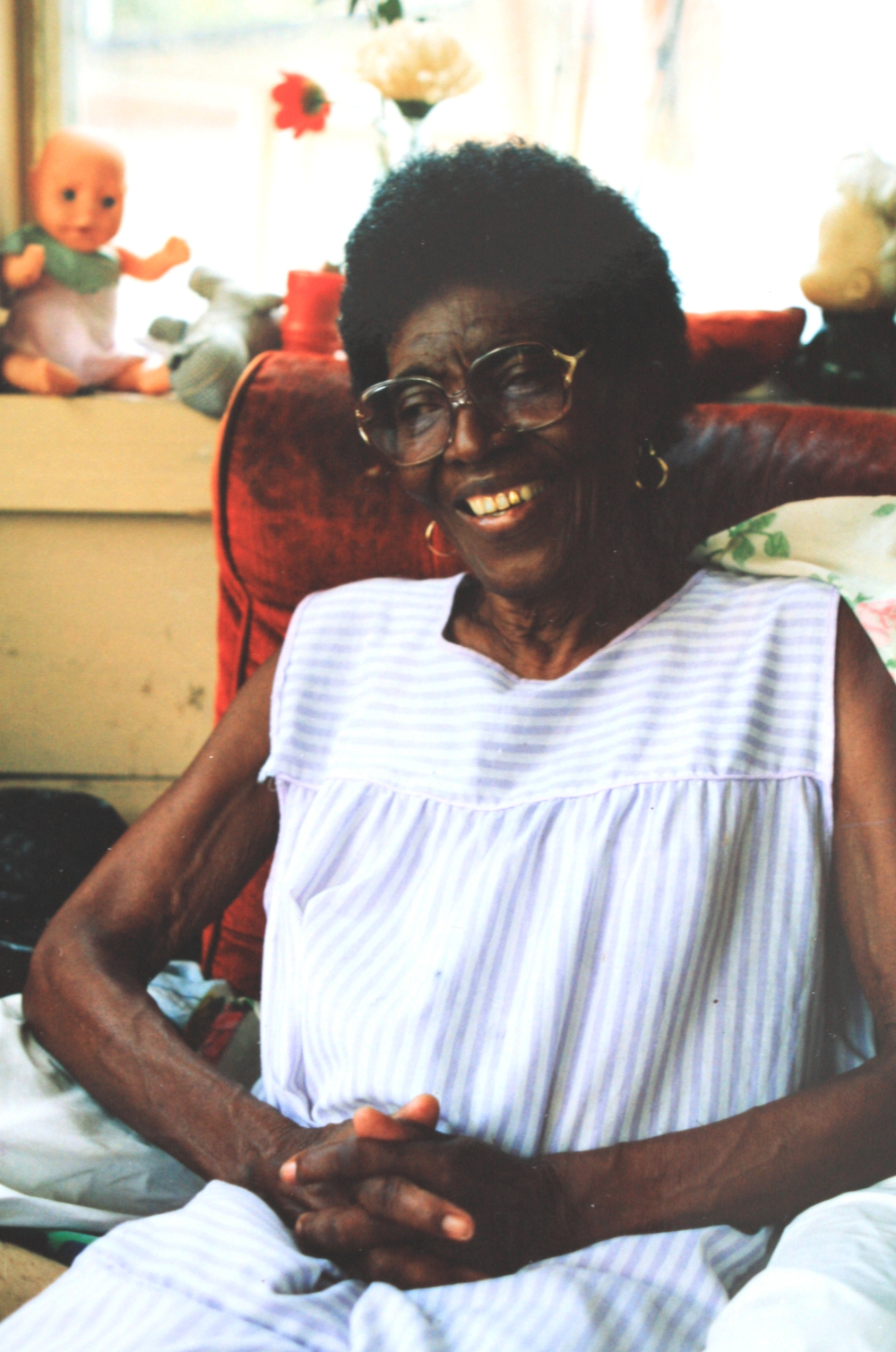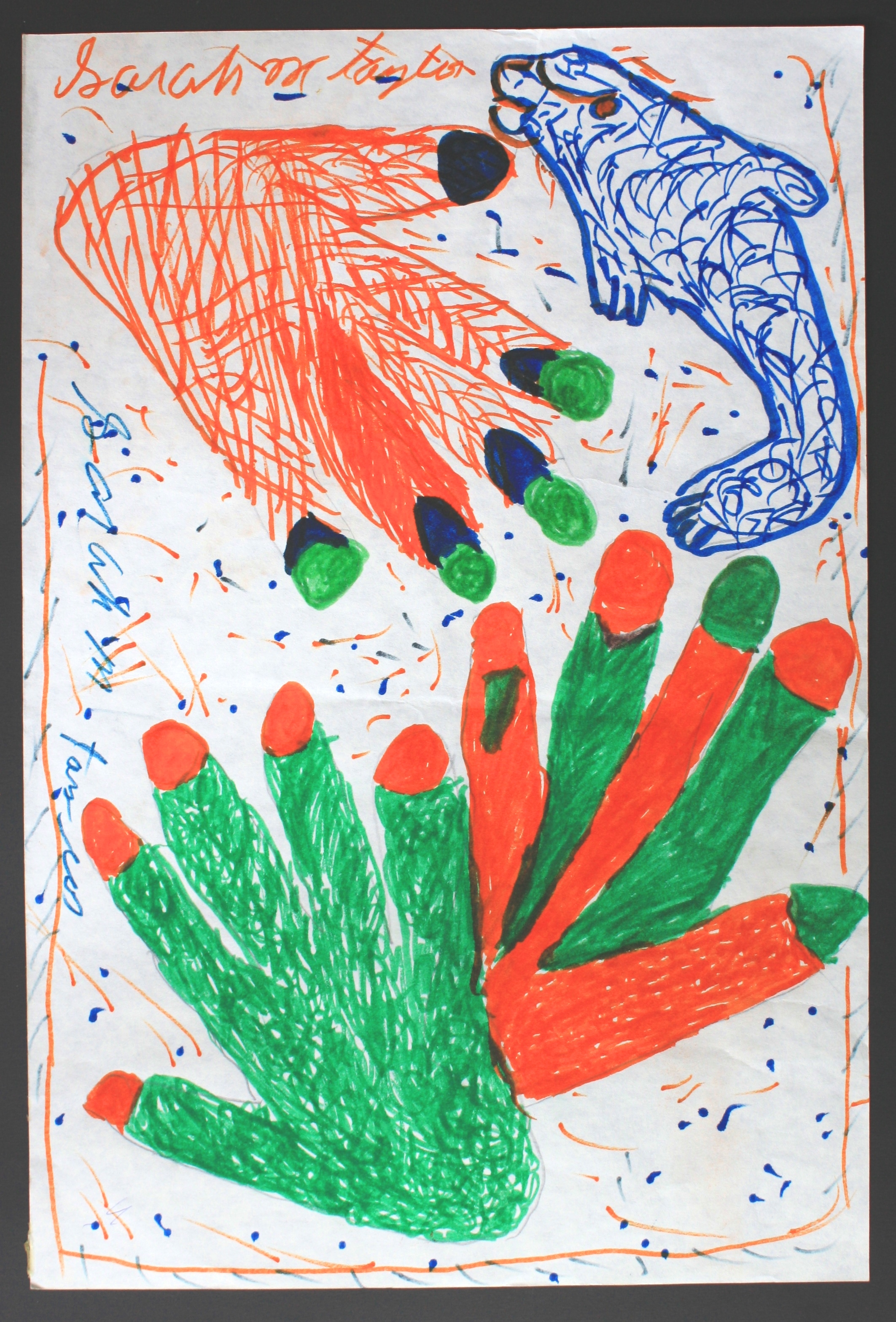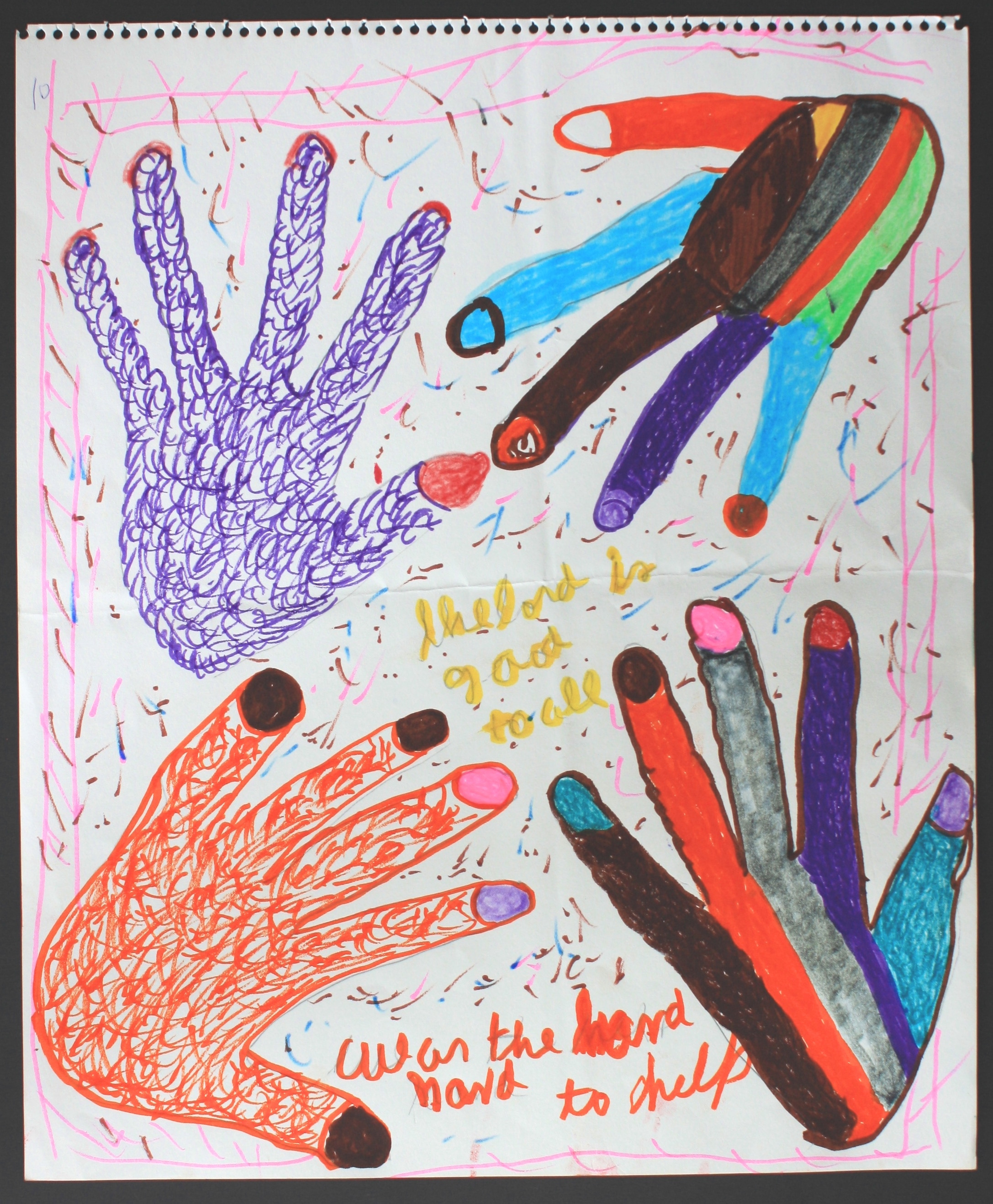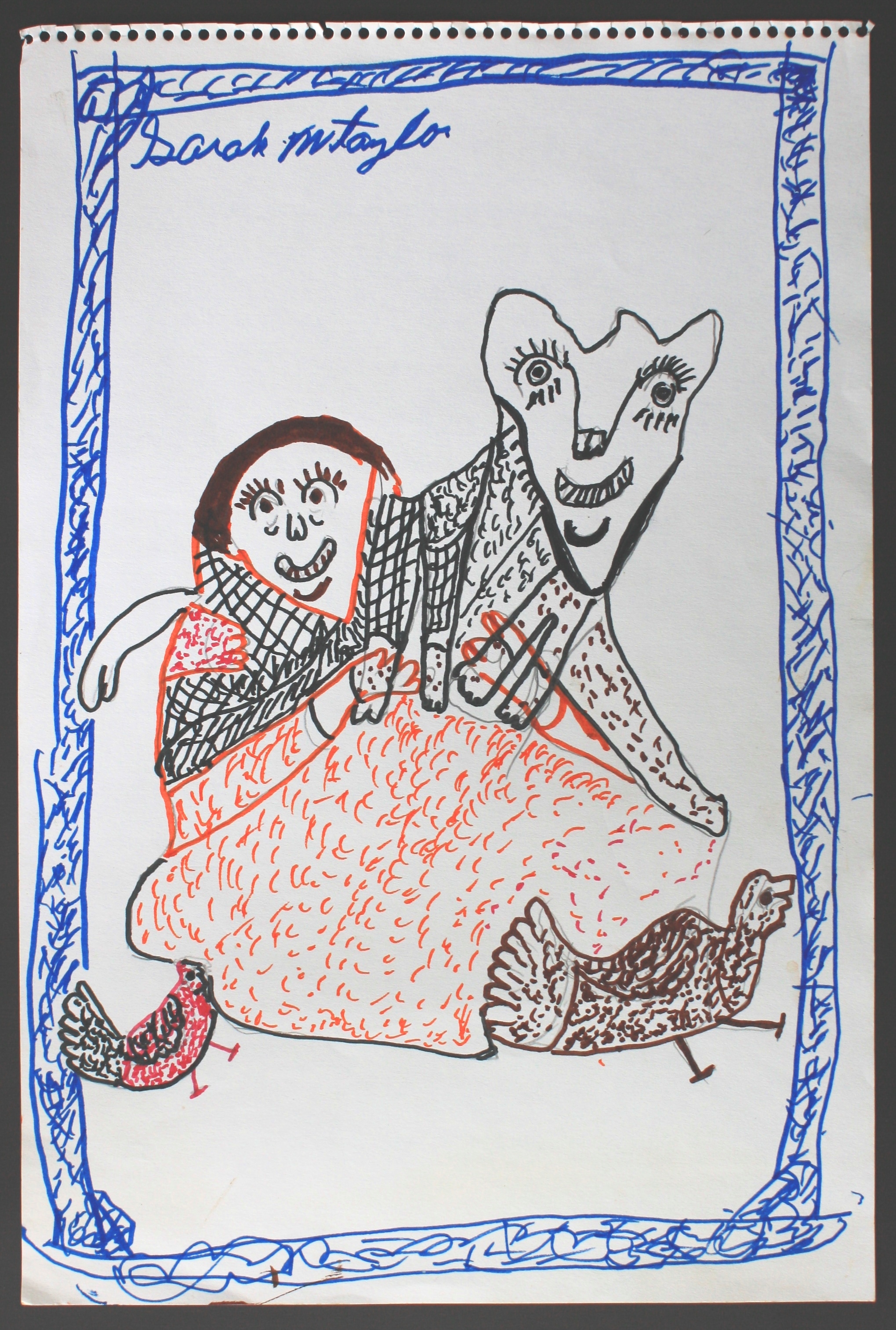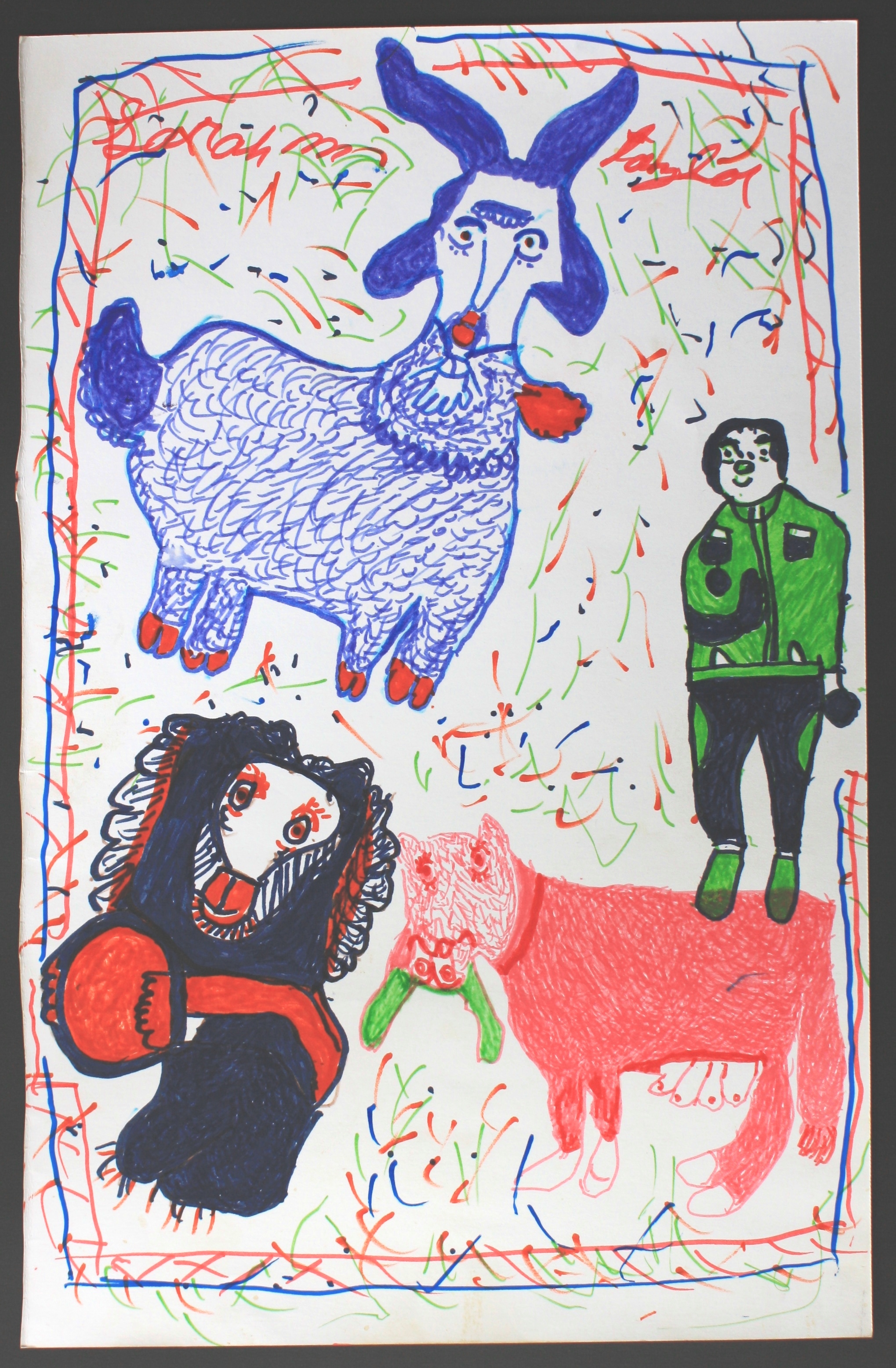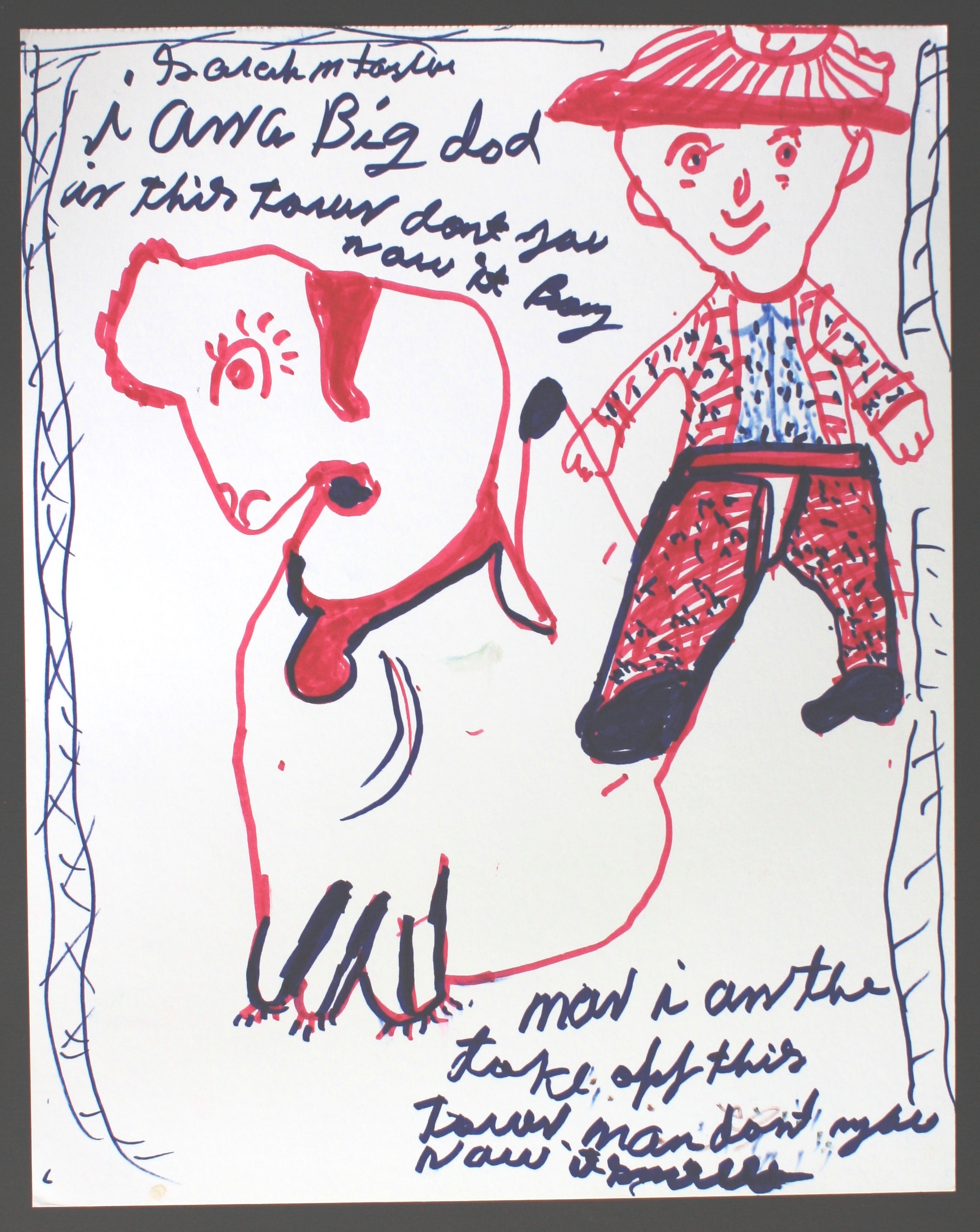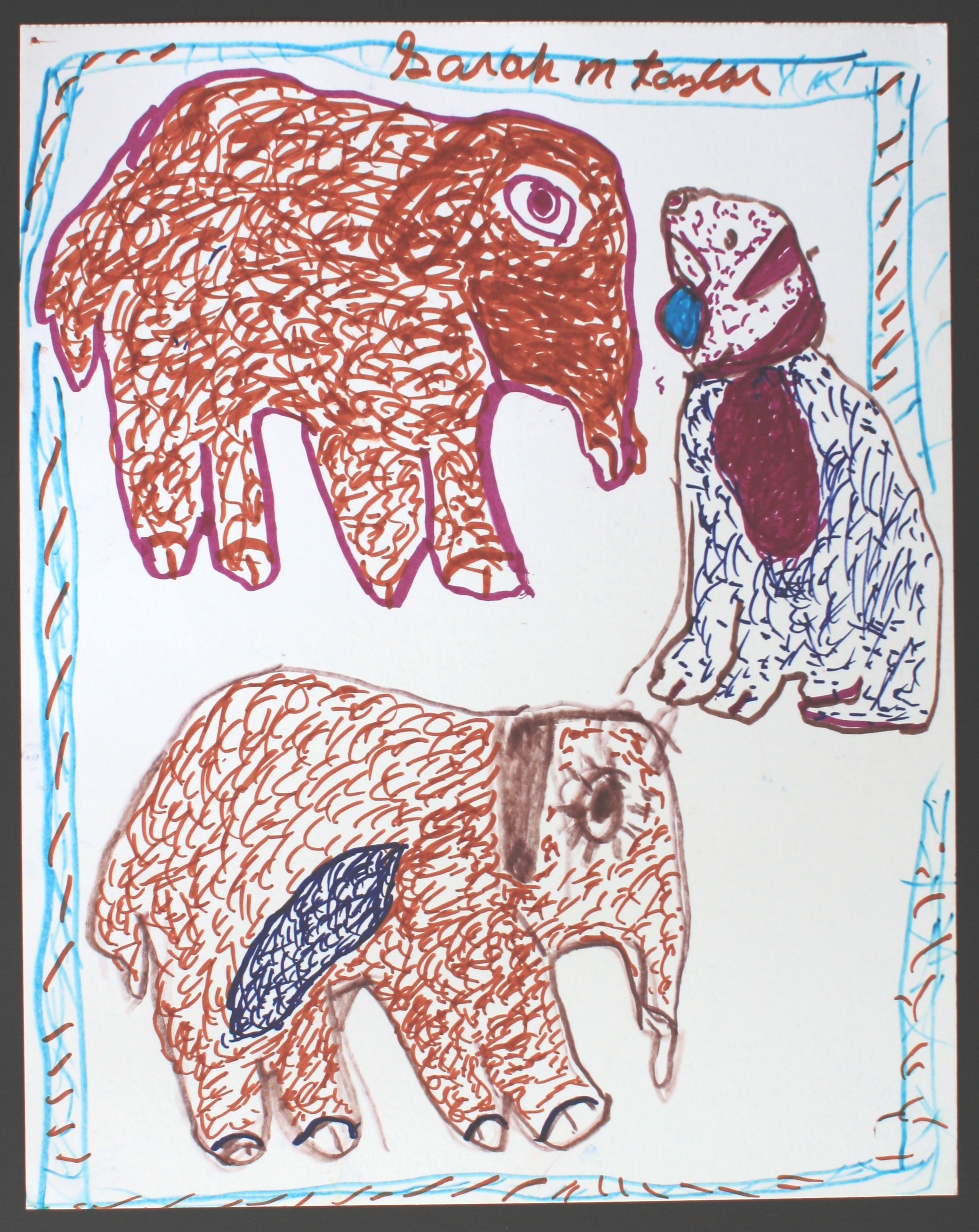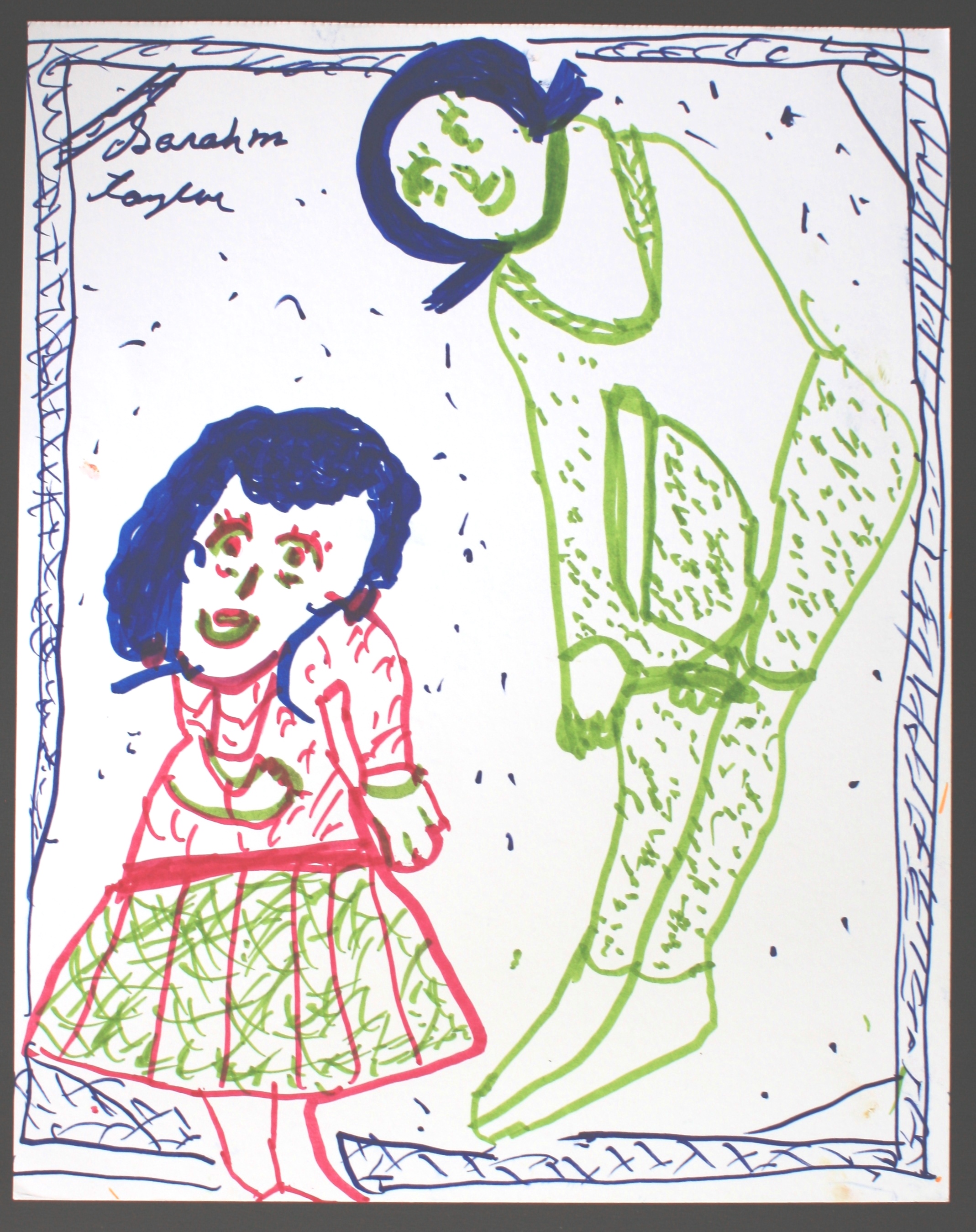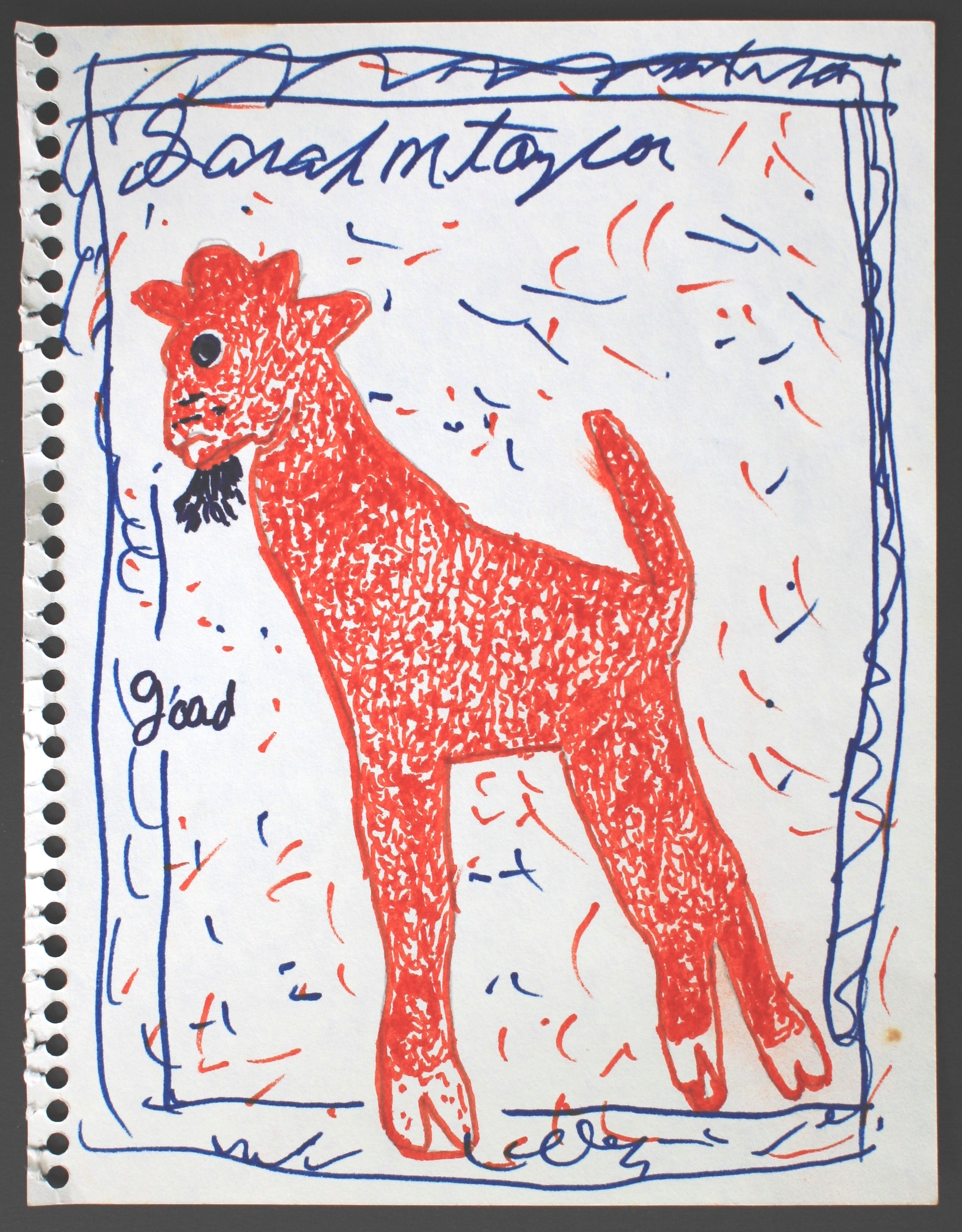I found quilter Sarah Mary Taylor the way I eventually find all living artists of interest, I simply ask. My interest in untrained artists was sparked while still a college student, first during the pursuit my Bachelor of Fine Arts degree from the Columbus College of Art and Design. These self-taught artists worked as I do, largely by intuition and from the heart; these were the creators to whom I felt a kinship. Following then as a graduate student at Ohio State University, I did not feel a commonality in the Modernist dogma nor Post-Modernist philosophies prevalent amongst my peers. An avid reader and voracious for what (beginning in the 1980’s) was a limited offering of this sort of material, it was easy enough to find a given artist’s hometown. I would next call information or the operator on the phone, sometimes waiting until I reached a given destination to then procure a phonebook. In those days any available phone booth would do, finding my target artists in the white pages and making a cold call. My efforts were very rarely thwarted.
Having moved to New York City in 1989, it was during the 1990’s that my traveling partner Joyce and I would fly into Atlanta or New Orleans, pick up a rental car and head out in search of artists-often heading West, making a loop to return to the point of departure from the East. We spent an afternoon with Sarah Mary Taylor in 1995. On this particular excursion to Mississippi, we would also visit the great American painter Mary T. Smith-outside of Hazelhurst and woodcarver George Williams, from Fayette in Jefferson County. With phone number in hand, I called from a phone booth along Route 16 to tell Sarah that I and my sidekick and future wife were soon to be in town, and that we wished to visit her that day. My scrawled notes now remind me to cross the railroad tracks, to continue on past the Chevron station and further past Gus’s Bar and Diner to a left turn onto Hamilton Street and her address at 325, on the left side of the road where we would find her modest shotgun-style home.
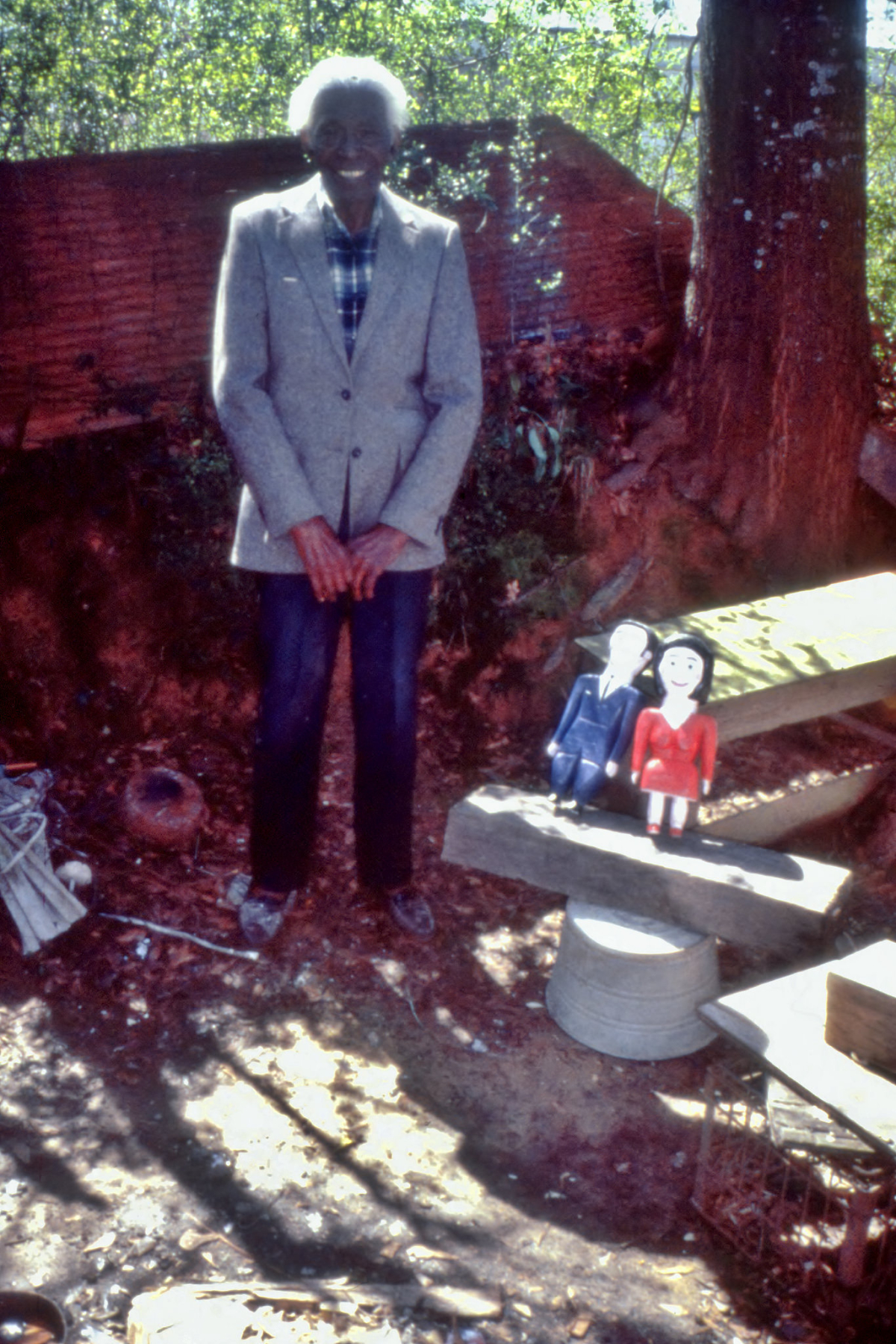
Sarah Mary Taylor had lived and toiled on working plantations throughout the Mississippi Delta for most of her life. Tall and relatively thin even as she advanced in age, her body revealed a fit if bent nature the result of those years of drudgery. Working at first and quite early for an individual by today’s standards, she would begin yet a child as a field hand picking cotton. Sarah would eventually find employment as a cook and also then later serve as a general housekeeper before retiring to Yazoo City, Mississippi.
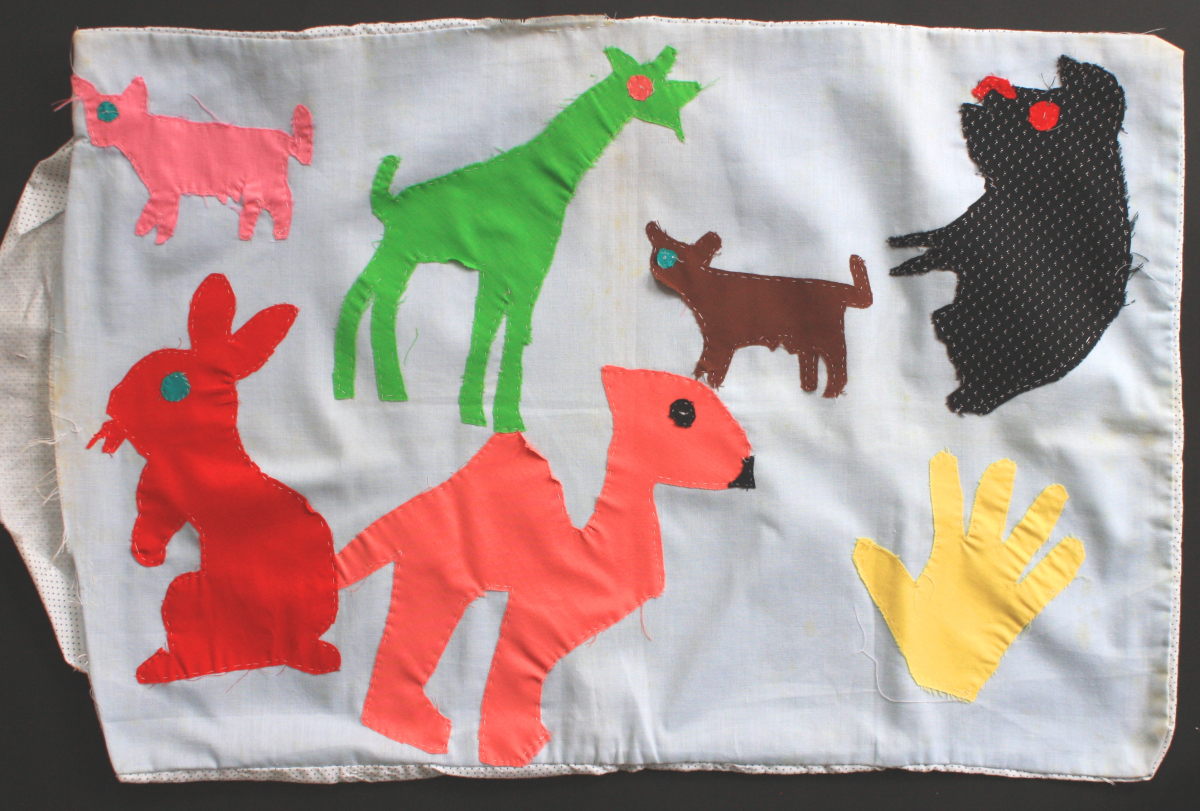
Learning early, at just about the time of the First World War and at the age of nine, Sarah Mary Taylor acquired her sewing skill piecing bed linens at the hands and knee of her mother. It was not until Taylor retired from a long and strenuous life of physically and mentally demanding work and was in search of a new source of income, that Sarah Mary Taylor took the occupation of her once idle craft up full-time. Born in the small unincorporated community of Anding-not far from Yazoo City-in 1916, she had no formal schooling and found her options now to be few.
It is Sarah’s drawings that offer insight into her quilts and pillowcase designs as influenced by her fruitful power of imagination.
Sarah freely acknowledged that she was inspired by the applique style of quilts, particularly those created by her aunt Pecolia Warner. Pecolia had previously received critical attention for her wares and as more important to Taylor at the time, the successful sales of those sewn goods. Working in Chicago and New Orleans before retiring home in 1968, Pecolia Warner (1901-1983) had been raised in Yazoo City, the ninth of eleven children. Quilting then, facilitated the warming of chilly nights. Warner had been recognized by an arts professor at the University of Mississippi for her improvisational quilting style. Pecolia Warner was consequently celebrated nationally and hers, and soon Sarah’s, monies would come through an ever-growing audience from outside of their small and insular communities. In her later years, quilt making would become Sarah’s sole means of income.
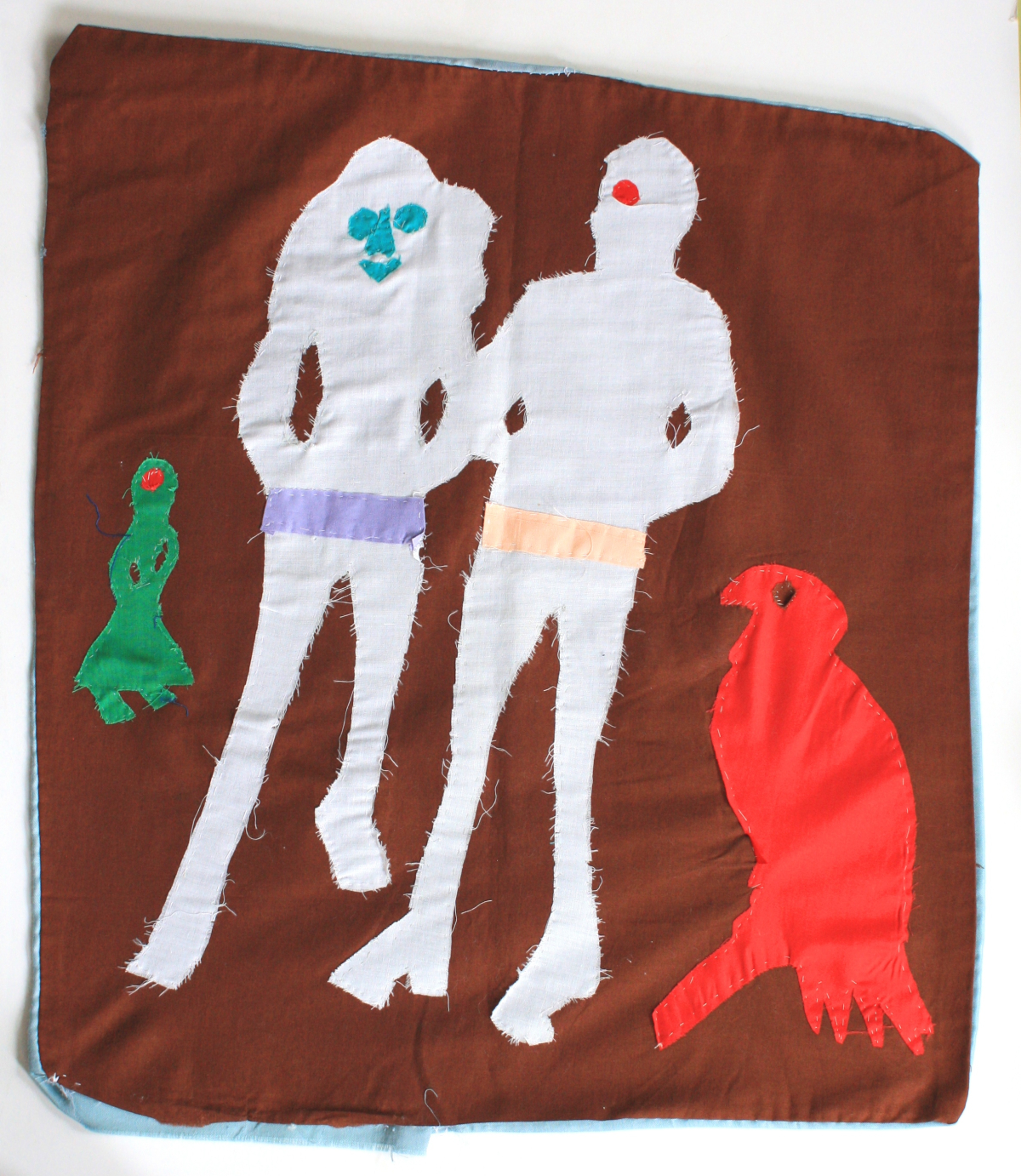
Sarah Mary Taylor’s skillset comes via this illustrious pair of quilters, including her mother Pearlie Posey (1894-1984). The Ella King Torrey Collection of African American Quilts at the Philadelphia Museum of Art includes a group of thirteen quilts including two by Sarah Mary Taylor ( a “word quilt” and one of her “hand” quilts- an example of this design also commissioned for inclusion in the popular 1985 film, The Color Purple), and two by Posey. All three: Pecolia, Sarah and Pearlie are today nationally renowned quilters.
That hot summer visit would find Sarah busy at work in her home, steadfastly piecing fabrics together for a recently commissioned quilt. At age 79, her talents had long been recognized and the demand for her quilted work found on this particular day, nothing…nothing available for sale at that moment, or any eagerly anticipated example complete. She graciously apologized for the assumed inconvenience but mentioned she did have a few drawings at hand. Included was an early example of the Statue of Liberty, from which an impish and dimpled grin greets us in friendly embrace beneath forest green crown. I was hooked; finding a unique and make-do sensibility in the drawings, here was the unforeseen magic in a face-to-face visit.
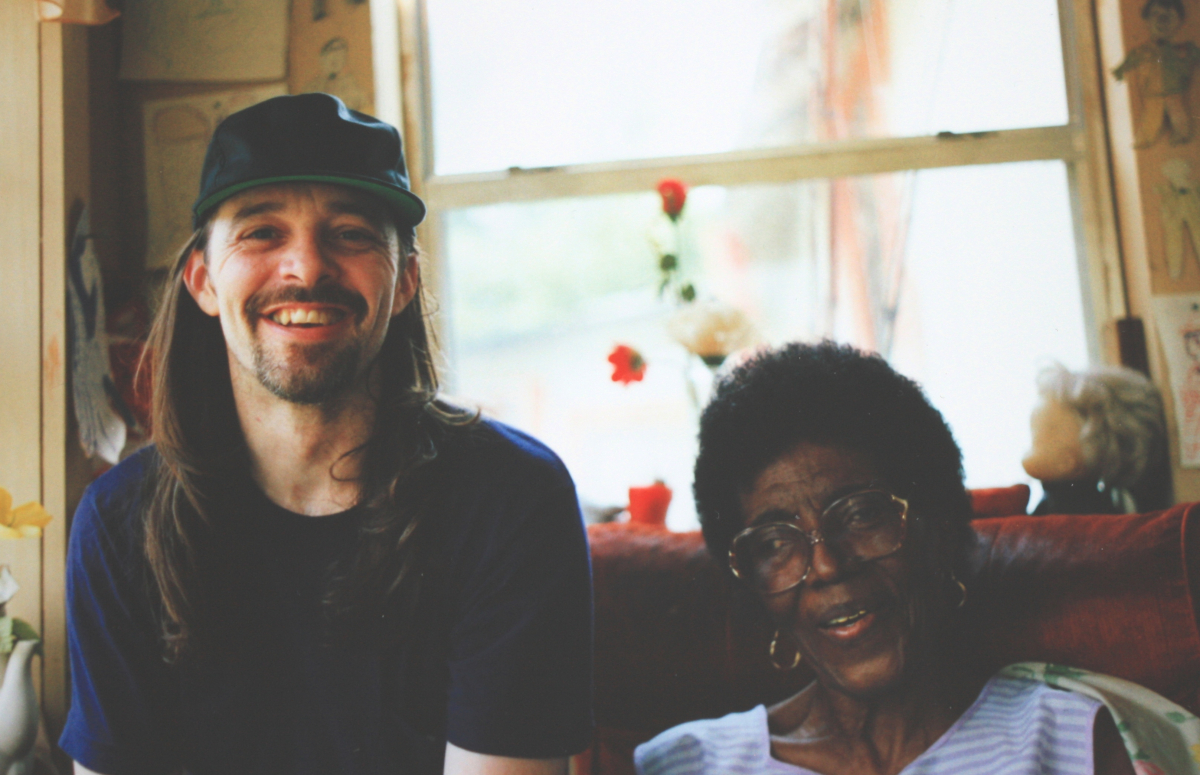
Behind her, cut out paper figures were push-pinned to the window frame, up one side and down the other.
At Sarah’s suggestion we would retire to her porch to cool off, where one large window facing the street had been replaced with screening to see some additional examples of her drawn work. The fabrics she used for her quilts were culled of old dresses and Sarah retained an encyclopedic knowledge of dress construction and styles. These images of apparel appear as if they might be snipped from the page, to clothe in exchange those figures inhabiting other works on paper, in imagined striped prints not unlike Sarah’s own frock worn that day. Joyce and I took each other’s photograph with Sarah, and then a few of her sitting alone in an overstuffed chair; a total of four photos documenting the visit finding common in all of them, Sarah’s eyes diverted from contact with the camera. Behind her, cut out paper figures were push-pinned to the window frame, up one side and down the other. Joyous portraits of feathered Native Americans in black and red fill the page of a small drawing tacked to the wall.
While Sarah would bring her own unique compositional skills and vibrant color schemes to the quilting practice, it is her works on paper that reveal a uniquely talented artist and draftsman. While most quilters work from what is often a treasure-trove of beloved paper patterns, Taylor took her creative talents the additional step, tracing forms from her metaphorical vocabulary of quilting patterns onto paper and filling the outlines with chromatic fields of dots and dashes. She produced only a few hundred of these whimsical and joyous drawings, in complement with the same menagerie of figures and animal life adorning her works of scrapped dress fabrics and often raw cotton batting. The silhouettes of her cherished prototypes inspired Taylor’s fertile imagination to fill simple line with detail and studied description a population of persons, domesticated poultry and farm-life revealing a distinctive artist of versatile skill.
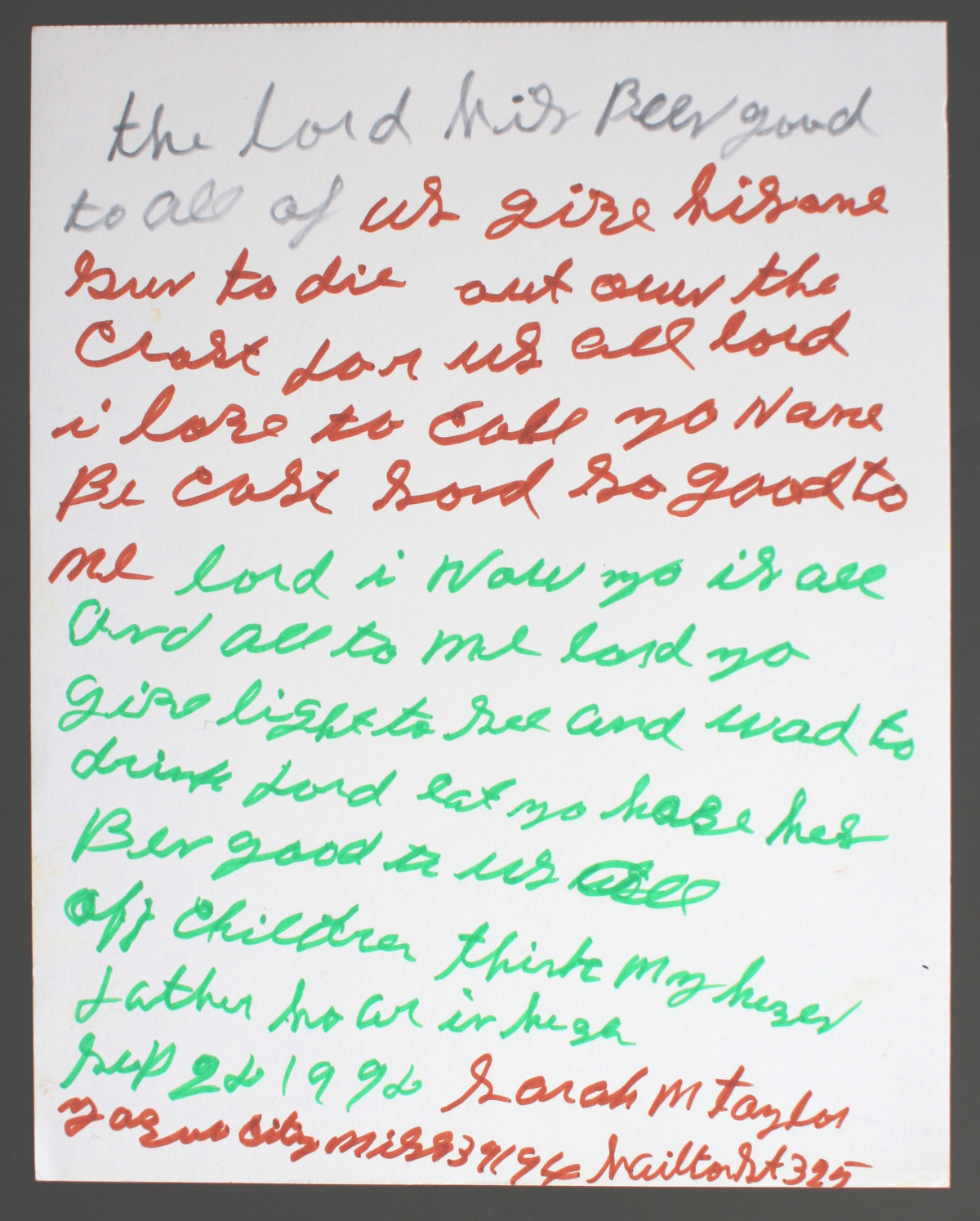
Subsequent to our visit that day, I would buy money-orders for modest dollar amounts and pads of a better quality paper to send to Sarah from New York City. She would fill the pads of paper with her whimsical drawings and send them back to me, brimming with her jumble of beasts and imagined persons; a generous gift. We would build our long-distance friendship over the next few years before her death at century’s turn. It is Sarah’s drawings that offer insight into her quilts and pillowcase designs as influenced by her fruitful power of imagination. From a meager existence and ill-prepared to tackle a world increasingly demanding of advanced education and studied vocation, Sarah Mary Taylor would find her voice in scraps of paper and bits of cloth to proclaim her hold on a position of creative excellence to rival the best in America.

